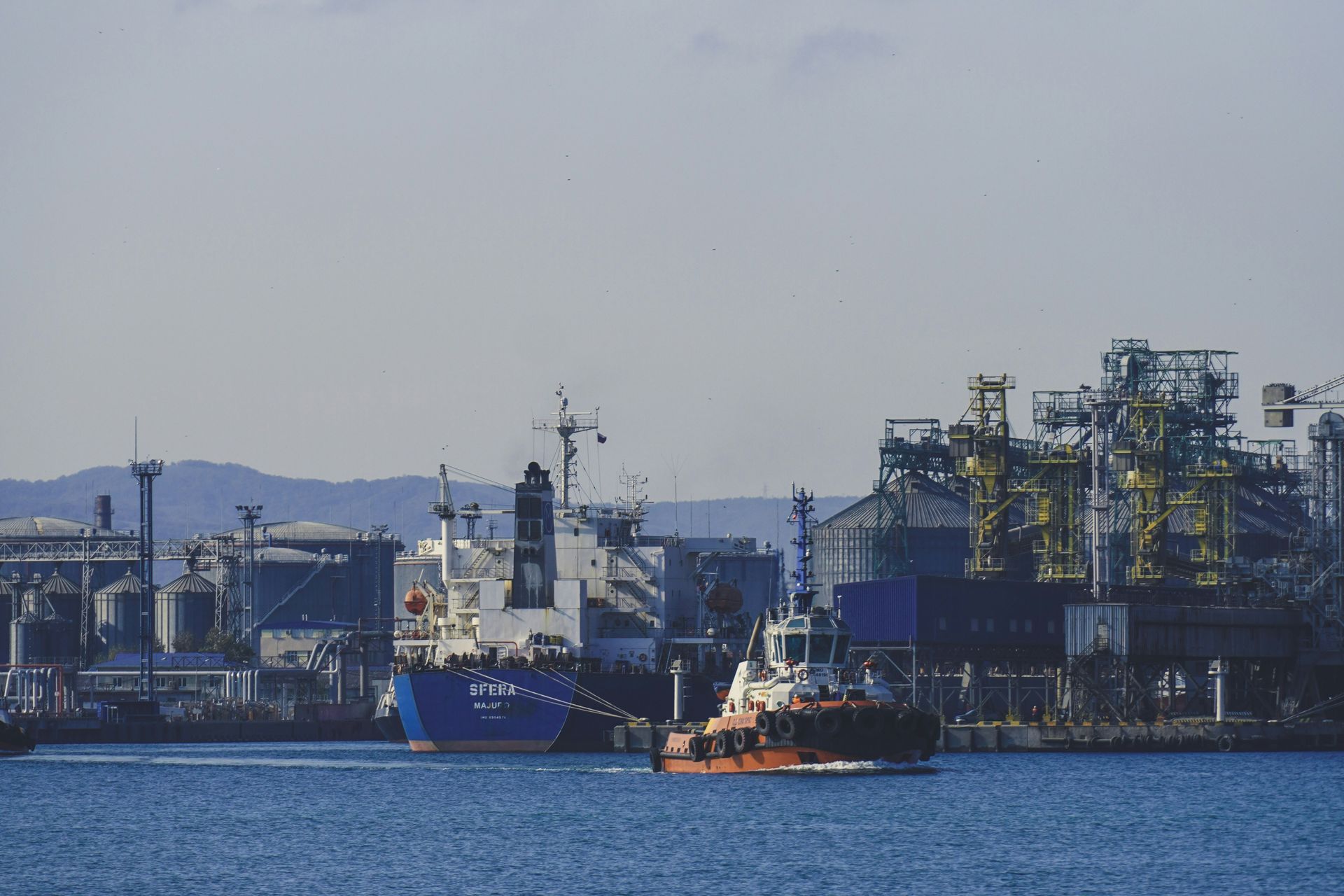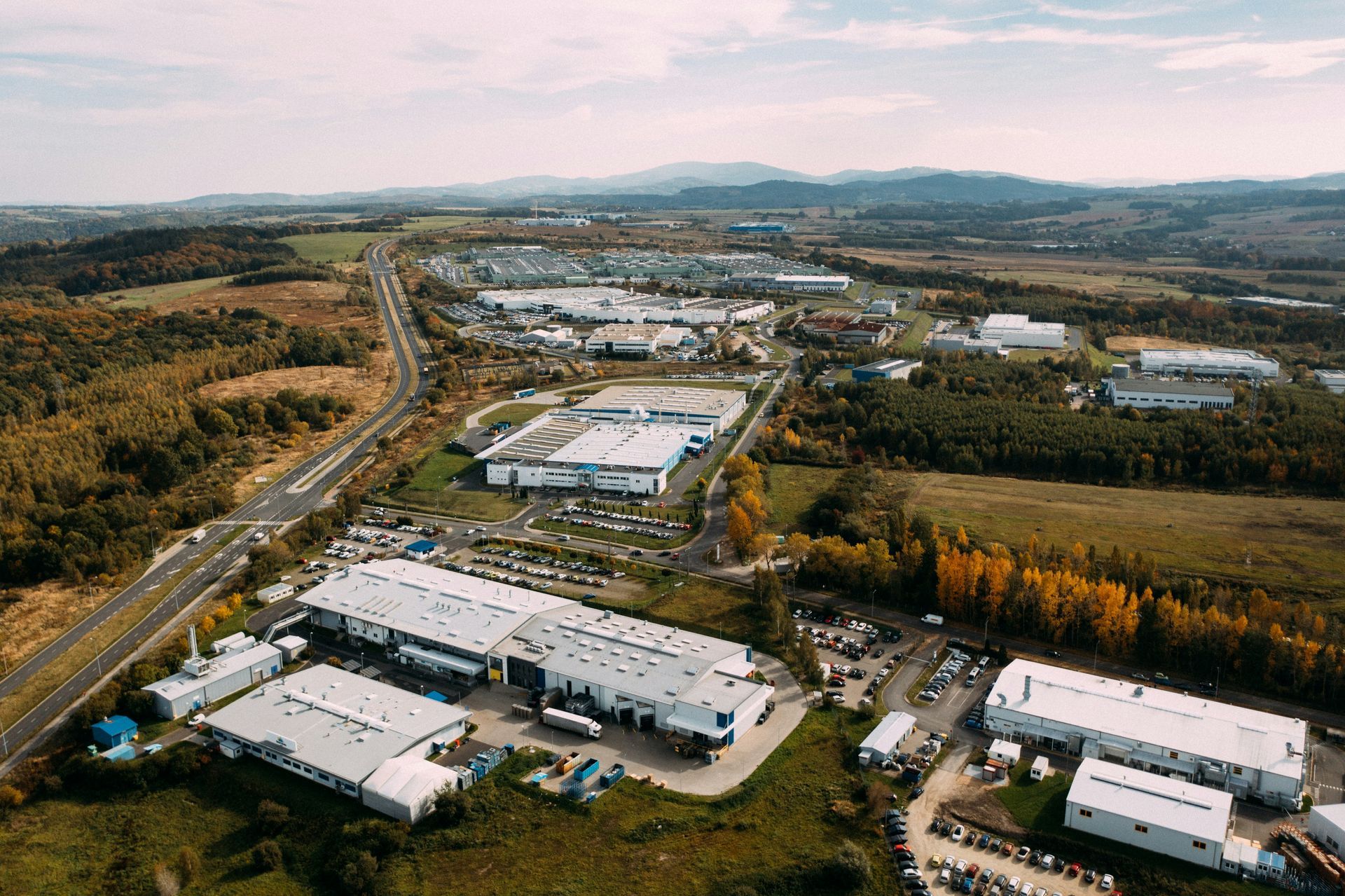404.561.5659
contact@chain-wise.com
BLOG

The world has witnessed significant shifts in supply chain operations over the past few years. Disruptions, such as the COVID-19 pandemic, have exposed the vulnerabilities of traditional supply chains, prompting a reevaluation of their design and operation. This shift in perspective has led to an increased focus on enhancing resilience and agility in supply chains, transforming them from cost-centric models to strategic assets that can respond dynamically to changing market conditions and customer demands. The Traditional Supply Chain Model Historically, supply chains have been designed with a primary focus on cost efficiency and service quality. These models have often prioritized stable, high-volume products, utilizing standardized processes and rigid automation systems for production and logistics. However, recent disruptions have revealed the limitations of such models, underscoring the need for greater flexibility and adaptability in supply chain operations. The Emergence of New Priorities As the market dynamics evolve, there are three new priorities that supply chains need to address. These include: Resilience: The ability to recover quickly from disruptions and maintain continuity of operations. Agility: The ability to respond swiftly to changing customer demands and market condition. Sustainability: The need to incorporate social and environmental considerations into supply chain strategies to support the transition towards a more sustainable economy. In addition to these, traditional objectives such as cost efficiency, service quality, and customer satisfaction continue to be important. But these new priorities represent a shift towards a more strategic and future-oriented approach to supply chain management. Building Resilience in Supply Chains Resilience in supply chains is about enhancing their ability to withstand disruptions and recover quickly from them. This involves identifying potential vulnerabilities in the supply chain and implementing measures to mitigate them. For instance, companies need to have a clear understanding of their supply chain networks, including their suppliers, processes, and facilities, and assess their exposure to potential risks. Improving supply chain resilience also requires investing in technologies that enable visibility and control over supply chain operations. For instance, using advanced analytics and machine learning technologies, companies can better predict potential disruptions and respond to them more quickly and effectively. Enhancing Agility in Supply Chains Supply chain agility is about enabling companies to respond swiftly to changing customer demands and market conditions. It involves building capabilities for dynamic planning and execution, leveraging digital technologies, and fostering a culture of innovation and flexibility. Agile supply chains require more sophisticated demand sensing and forecasting capabilities, enabled by machine learning and predictive analytics. They also require flexible manufacturing and logistics operations, capable of handling a wide range of products and shipment types. In addition, they require a skilled and flexible workforce, comfortable working with advanced technologies and capable of adapting to changing business needs. Incorporating Sustainability in Supply Chains Sustainability in supply chains is about integrating social and environmental considerations into supply chain strategies. This involves considering the environmental footprint of supply chain operations, including energy consumption, waste generation, and greenhouse gas emissions, and implementing measures to reduce them. Sustainable supply chains also consider social aspects, such as labor practices and human rights, in their operations. They strive to contribute positively to the communities in which they operate and ensure fair and equitable treatment of all stakeholders. The Role of Technology in Future-proofing Supply Chains Technology plays a crucial role in enabling resilience, agility, and sustainability in supply chains. Advanced analytics, machine learning, and other AI technologies can provide valuable insights into supply chain operations, helping companies predict potential disruptions, optimize resource allocation, and improve operational efficiency. Moreover, digital technologies such as IoT, blockchain, and cloud computing can enhance visibility and control over supply chain operations, enabling real-time monitoring and decision-making. They can also facilitate collaboration and information sharing among supply chain partners, enhancing trust and transparency in the supply chain. Looking Ahead: The Supply Chains of the Future The supply chains of the future will be characterized by their resilience, agility, and sustainability. They will be equipped to handle disruptions, respond swiftly to changing market conditions, and contribute positively to social and environmental sustainability. To build such supply chains, companies need to reassess their supply chain strategies and invest in the necessary capabilities and technologies. They also need to foster a culture of innovation and flexibility, and engage with their supply chain partners in a collaborative and transparent manner. In conclusion, future-proofing supply chains is not just about mitigating risks and enhancing operational efficiency. It's about transforming supply chains into strategic assets that can drive competitive advantage and contribute to sustainable development. Key Actions to Future-Proof Supply Chains Evaluate and understand vulnerabilities in your supply chain. Invest in technologies that provide visibility and control over supply chain operations. Build capabilities for dynamic planning and execution. Foster a culture of innovation and flexibility. Integrate social and environmental considerations into supply chain strategies. Collaborate and share information openly with supply chain partners. Supply chains are undergoing a transformation as they adapt to changing market conditions and customer demands. The focus is shifting from cost efficiency to resilience, agility, and sustainability. Building resilient, agile, and sustainable supply chains will require a reassessment of supply chain strategies, investment in new capabilities and technologies, and a culture of innovation and flexibility. By future-proofing their supply chains, companies can turn them into strategic assets that drive competitive advantage and contribute to sustainable development.

In today's dynamic retail and food landscape, consumers expect a seamless shopping experience across all channels, whether it's browsing online, purchasing in-store, or opting for convenient home delivery. To meet these evolving expectations, retailers and food businesses need to optimize their omnichannel distribution strategies. This involves integrating various aspects, from efficient fulfillment options to robust last-mile logistics and optimized inventory management. Here, we delve into key considerations for optimizing omnichannel distribution in retail and food, drawing insights from successful industry examples: 1. Fulfillment Strategies: • Omnichannel fulfillment centers: Establishing centralized hubs equipped to handle online orders, in-store pick-up, and ship-to-store options can streamline fulfillment and offer customers flexibility. Industry Example: Walmart is investing heavily in its network of fulfillment centers, allowing for faster deliveries and efficient in-store pick-up options (source: WALMART ). • Micro-fulfillment centers: Strategically placing smaller fulfillment centers closer to urban areas can significantly reduce last-mile delivery times, particularly for groceries and other time-sensitive items. Industry Example: Kroger is piloting micro-fulfillment centers in partnership with automation company Takeoff Technologies, aiming to fulfill online grocery orders within minutes (source: KROGER ) 2. Last-Mile Logistics: • Leveraging diverse delivery options: Offering a variety of delivery choices, including same-day, scheduled deliveries, and click-and-collect options, caters to diverse customer preferences and enhances convenience. Industry Example: Amazon continues to innovate in last-mile delivery, offering drone delivery in select areas and exploring autonomous vehicle options to further expedite deliveries (source: AMAZON ) • Partnerships with third-party logistics providers: Collaborating with established logistics companies can provide access to wider delivery networks, expertise, and potentially lower costs, especially for smaller businesses. Industry Example: Many food retailers partner with delivery platforms like DoorDash and Uber Eats to reach customers efficiently, expanding their delivery reach beyond their own infrastructure (source: INSTACART ). 3. Inventory Management: • Real-time inventory visibility: Having a unified inventory management system across all channels provides accurate stock levels, preventing overselling and ensuring order fulfillment accuracy. Industry Example: Target utilizes a cloud-based inventory management system that provides real-time data on product availability across stores and online platforms, allowing for informed decisions on stocking and promotions (source: TARGET ) • Demand forecasting and dynamic allocation: Utilizing data analytics to predict customer demand and dynamically allocate inventory across channels can optimize stock levels and minimize the risk of stockouts or excess inventory. Industry Example: Grocery chains like Albertsons are employing AI-powered demand forecasting tools to better predict customer needs and optimize inventory allocation across stores, reducing food waste and improving product availability (source: ALBERTSON ). Optimizing omnichannel distribution is an ongoing process requiring continuous evaluation and adaptation. By carefully considering these key aspects and learning from successful industry examples, retailers and food businesses can create a seamless and efficient shopping experience for their customers, ultimately driving loyalty and growth. Remember, at Chainwise, we are your trusted partner in optimizing your physical supply chain. We offer comprehensive solutions to help you navigate the complexities of omnichannel distribution and achieve your business goals.

Securing the right industrial real estate is a pivotal step for businesses across industries, but the complexities can easily lead to costly detours. Ignoring crucial due diligence, overlooking the local market, or misjudging financials are just a few of the missteps that can derail your investment journey. At CHAINWISE , we've help clients avoid these mistakes and find the perfect fit for their physical supply chain needs. Here, we delve into 5 common pitfalls and offer strategic tips to ensure your industrial real estate selection is a resounding success: Pitfall #1- Ignoring Future Growth: It's tempting to prioritize short-term needs and choose a facility that seems "just enough." However, failing to consider future expansion plans can lead to costly relocations or inefficient space utilization down the line. Tip: Conduct thorough demand forecasting and incorporate projected growth into your selection criteria. Choose a space with potential for expansion or flexibility to accommodate changing needs. For example, consider facilities with modular layouts or open floor plans that can be easily adapted to future requirements. Pitfall #2- Underestimating Operational Requirements: Beyond size and location, overlook crucial factors like ceiling height, loading dock capabilities, and power supply. Failing to ensure these align with your specific operations can disrupt efficiency and increase costs. Tip: Clearly define your operational requirements. Partner with a knowledgeable real estate specialist or consultant who understands your industry and can identify facilities that meet your unique needs. Don't hesitate to involve experienced contractors or engineers to assess specific aspects like loading dock capacity or power supply requirements. Pitfall #3- Neglecting Logistics and Transportation: Location matters beyond proximity to your customer base. Consider access to major highways, proximity to ports or airports, and the availability of transportation infrastructure. An inconvenient location can add significant costs and delays to your supply chain. Tip: Conduct a comprehensive transportation analysis, considering traffic patterns, accessibility to key transportation hubs, and potential disruptions due to road closures or construction. Choose a location that facilitates efficient movement of goods, minimizing transportation headaches and maximizing delivery speed. For example, prioritize facilities with easy access to major roads or interstates, and consider proximity to transportation hubs like airports or seaports if relevant to your operations. Pitfall #4- Negligence in Due Diligence: Thinking you can skip the detailed inspection, lease review, and financial analysis is like building a house on sand. Skipping meticulous due diligence can unearth hidden issues later, transforming a promising investment into a financial quagmire. Partner with real estate experts to scrutinize every aspect of the property and market. Tip: Conduct a thorough property inspection, meticulously understand zoning regulations, and meticulously negotiate lease terms. Don't hesitate to involve legal counsel to ensure everything is airtight before you sign on the dotted line. Remember, due diligence isn't a one-time event; continue monitoring the property and market conditions throughout the lease term. Pitfall #5- Solo Venture: Going it alone in this complex landscape is risky. Build a professional team – commercial real estate brokers, financial advisors, property management teams, tax specialists, and real estate attorneys – to guide you through the process and ensure a smooth journey from acquisition to management. Tip: Seek diverse expertise, building a team tailored to your specific needs and goals. Leverage their combined knowledge and experience to navigate the complexities of the transaction and optimize your investment. Remember, the right team can save you time, money, and unnecessary headaches in the long run. Beyond these pitfalls, remember: • Seek expert guidance: Partner with a reputable real estate advisor and consultant (WE HAPPEN TO BE BOTH) who can advocate for your needs and navigate the complexities of the market. • Be flexible: The perfect space may not tick every box, but prioritize the most critical factors and be open to compromise on less crucial elements. • The right fit fuels growth: By avoiding these common pitfalls and implementing these strategic tips, you can navigate the industrial real estate market with confidence and secure a facility that empowers your business success. Remember, at CHAINWISE , we're your trusted partner in optimizing your physical supply chain. Contact us today and let us help you navigate the selection process with confidence and secure the perfect space to fuel your growth and profitability.

Supply chain management has become increasingly critical in today's rapidly evolving business landscape. With volatile consumer preferences, customization demands, and the need for sustainability, companies face numerous challenges. To stay competitive, businesses must embrace a transparent and circular value chain that reduces waste, optimizes operations, and meets evolving market expectations. Building Resilient and Sustainable Networks Traditional linear supply chains are no longer sufficient. Companies need to develop more resilient networks that can withstand unforeseen disruptions and adapt to changing market dynamics. Additionally, investors, consumers, and governments are demanding more sustainable products and processes. Certifications and transparency are crucial to demonstrate a company's commitment to sustainability. Harnessing the Power of Traceability Technologies Traceability technologies have emerged as powerful solutions to address these challenges. By tracing products and goods across the value chain, these technologies provide valuable insights into inputs' origin, supplier sourcing practices, and conversion processes. With this data, companies can make informed decisions, predict outcomes, optimize operations, and enhance customer service. Benefits of Supply Chain Visibility Implementing traceability technologies offers numerous benefits to companies. It enables greater efficiency and responsiveness by identifying unnecessary resource consumption, responding quickly to changes in demand, and fulfilling orders more efficiently. Furthermore, it helps companies uncover strategic value chain opportunities and innovate faster by providing a comprehensive view of the entire value chain. Lastly, traceability technologies facilitate the certification of sustainable processes and products, meeting the growing demand for transparency and accountability. Gaining a Competitive Edge Companies that invest in traceability technologies outperform their competitors with limited visibility. They are better equipped to navigate supply chain disruptions and mitigate allegations about product safety or provenance. In the next decade, there will likely be a clear divide between companies that embrace traceability and those that do not. Traceability leaders will shape industry standards and regulations, while companies without traceability will be more vulnerable to disruptions. Overcoming Implementation Challenges While the benefits of traceability are clear, many companies struggle with implementation. The journey towards traceability can be complex, similar to a digital transformation. The multitude of technology options and application areas can be overwhelming. Companies often start with simple pilots but face challenges when scaling and amplifying the benefits across different areas. Collaboration with value chain partners is crucial but can be challenging due to the vast ecosystem involved. Developing a Traceability Strategy To successfully implement traceability, companies need a clear strategy. They must determine where tracing will generate the most value and focus their investment accordingly. This involves understanding the industry's strategic context, identifying customer and regulatory priorities, and recognizing areas where traceability can deliver a competitive advantage. Assessing the company's starting point and competitors' commitment to traceability helps determine the pace of implementation and potential partnership opportunities. Connecting Traceability to Business Objectives Resilience and sustainability must be prioritized throughout the entire value chain for companies to compete effectively today. This includes looking beyond Tier 1 suppliers and customers and considering the broader value chain. Companies must also meet rising consumer demands for speed, customization, and compliance with regulations and certifications. Understanding these objectives is crucial for leveraging traceability to drive value and achieve business goals. Traceability and Sustainability Traceability plays a vital role in supporting sustainability efforts by providing visibility into inputs and processes across the value chain. This visibility allows companies to identify areas for improvement and implement sustainable practices. Additionally, traceability provides the necessary information for provenance and sustainability certifications, enhancing a company's reputation and credibility. Implementing Traceability Solutions Traceability solutions can be implemented in various ways based on a company's objectives and industry context. It is crucial to focus on value and avoid overwhelming the value chain with complexity. By answering key questions about strategic goals, customer/regulatory priorities, competitive advantage, and business opportunities, companies can choose traceability applications that deliver significant dividends. Scaling and Collaboration Scaling traceability initiatives is essential to capture the full value of the technology. Many projects get stuck in pilot mode and fail to achieve broader impact. Collaboration is crucial as traceability requires close collaboration with value chain partners. Building a community of leaders, enablers, and potential partners can help drive success by sharing successes, failures, and best practices. The Future of Traceability Traceability technologies are rapidly evolving, and the next decade will see two performance curves in companies: a higher-performance curve for those investing in traceability and a lower-performing curve for those without it. The industry consensus is that traceability is crucial, with executives viewing it as "very or extremely important." However, only 15% of companies currently capture value at scale. Key Takeaways Traceability is essential for ensuring supply in a volatile business landscape, meeting sustainability demands, and gaining a competitive edge. Traceability technologies optimize operations, improve customer service, identify strategic opportunities, and certify sustainable processes. Successful implementation requires a clear strategy focused on areas generating the most value and collaboration with value chain partners. Companies investing in traceability outperform competitors while those without it are more vulnerable to disruptions and allegations. The future of traceability is promising, with rapid technological advancements and increasing industry recognition of its importance. References: Article 1: "The Next Revolution in Supply Chains," Bain & Company Article 2: "The Most Significant Risk to Supply Chains Today," Supply Chain Shaman Article 3: "The Impact of COVID-19 on Supply Chain Visibility," Quickbase Article 4: "Traceability: The Next Supply Chain Revolution," Bain & Company

In today's era of instant gratification, conquering the last mile in retail and food distribution is no longer a choice but a decisive battleground where customer satisfaction determines success or failure. Fortunately, forward-thinking businesses possess a secret weapon: cloud technology. By harnessing the power of cloud solutions, such as AWS, you can optimize your last-mile strategy and leave your competitors behind. This article presents a comprehensive 5-step playbook for achieving delivery domination through cloud-powered solutions, complete with real-world examples of how retailers are already winning with AWS. 1. Embrace Data-Driven Decisions with Cloud Analytics Leave behind the limitations of spreadsheets and embrace the potential of cloud analytics. Domino's Pizza, for instance, migrated their data to AWS Redshift, resulting in 20% faster order processing and improved prediction of peak demand (Source: Domino's case study, 2023). Similarly, Grubhub leverages Amazon Forecast to anticipate demand spikes based on weather and holidays, reducing delivery wait times by 15% and preventing order delays (Source: Grubhub blog post, 2023). 2. Build an Agile Delivery Fleet with Cloud Infrastructure Achieve agility in your delivery fleet management by leveraging cloud infrastructure. Walmart, for example, utilizes AWS IoT Core to manage a fleet of electric bikes and drones for urban deliveries, resulting in 30% faster deliveries in congested areas (Source: Walmart press release, 2023). Instacart leverages AWS Lambda to automatically scale their delivery capacity during peak grocery shopping hours, saving them 25% on infrastructure costs compared to traditional methods (Source: Instacart blog post, 2023). 3. Prioritize Customer Experience with Cloud-Powered Touchpoints Enhance customer experience by leveraging cloud-powered touchpoints throughout the delivery process. Petco integrated their delivery platform with AWS Cognito to offer personalized scheduling and contactless delivery options, leading to 80% customer satisfaction with their last-mile experience (Source: Petco press release, 2023). Similarly, Amazon Fresh uses AWS SNS to send proactive notifications about grocery deliveries, reducing customer inquiries by 18% (Source: Amazon Fresh case study, 2023). 4. Foster Seamless Teamwork with Cloud Collaboration Break down communication barriers and foster seamless teamwork through cloud collaboration. IKEA, for instance, uses AWS Chatbot to create secure communication channels between warehouse teams and delivery drivers, reducing operational delays by 20% (Source: IKEA case study, 2023). Domino's Pizza empowered their drivers with mobile apps powered by AWS Amplify, resulting in 12% faster deliveries and improved driver satisfaction (Source: Domino's press release, 2023). 5. Analyze and Iterate with Cloud-Powered Continuous Improvement Continuously analyze and improve your delivery operations by harnessing the power of cloud solutions. Grubhub utilizes AWS Step Functions to automate route optimization and driver dispatch, freeing up staff for customer service and strategic planning (Source: Grubhub blog post, 2023). Instacart relies on AWS QuickSight to monitor delivery performance and identify areas for improvement, resulting in 10% faster deliveries within six months (Source: Instacart blog post, 2023). By adopting these five steps and harnessing the power of cloud solutions like AWS (and others), you can transform your last-mile delivery challenges into competitive advantages. This article illustrates the many ways you can leverage different offers across the AWS platform. Most of these solutions can overlay on top of your current IT infrastructure and increase the speed of your decision-making process. With CHAINWISE and AWS, these highly obtainable solutions can enable faster deliveries, happier customers, and a thriving business ready to conquer the final frontier of retail and food distribution in 2024 and beyond. If you are ready to unlock the full potential of cloud technology in your last-mile delivery operations? Contact us today to discuss how our expertise and how AWS-based solutions can elevate your business to new heights. Sources: • Accenture. (2023). The future of logistics: Leveraging cloud-based analytics for a connected, agile, and sustainable supply chain. • Capgemini. (2023). AI-powered route optimization: The key to smarter and more sustainable deliveries in the last mile. • Deloitte. (2023). The future of last-mile delivery: On-demand, flexible, and sustainable. • Gartner. (2023). Market Guide for Cloud Scaling Services. • McKinsey

Sales & Operations Planning (S&OP) has established itself as a cornerstone of efficient and dynamic supply chain management. Its impact transcends mere tactical coordination, influencing strategic planning, financial health, and organizational culture. This article delves into the multifaceted benefits of S&OP, examining its strategic, P&L, and balance sheet impacts, as well as its positive influence on people and ways of working. Strategic Imperative: Growth Driver: S&OP aligns sales forecasts with operational capabilities, ensuring product availability to satisfy market demand at the right time and cost. This proactive approach eliminates missed opportunities due to stockouts and facilitates targeted growth initiatives. Risk Mitigation: Poorly coordinated supply chains harbor hidden vulnerabilities, exposing companies to unexpected disruptions and reputational damage. S&OP shines a light on these risks, enabling proactive mitigation strategies and fostering operational resilience. Financial Impact: Revenue Uplift: Optimized inventory levels, improved customer service, and enhanced distributor performance, all fostered by S&OP, directly translate to increased sales. Additionally, S&OP facilitates identifying and fulfilling previously unrealized demand, further boosting revenue figures. Cost Reduction: Streamlined operations, minimized waste, and efficient resource allocation, hallmarks of effective S&OP, lead to significant cost savings. Optimizing inventory holding and minimizing logistics expenses further enhance profitability. Balance Sheet Optimization: By aligning inventory with service levels, S&OP reduces the burden of slow-moving and obsolete products, freeing up tied-up capital and improving overall financial health. This streamlined inventory management strengthens liquidity and allows for strategic investment. People and Process: Accountability and Collaboration: S&OP defines clear roles and responsibilities, fostering accountability across departments. Decentralized decision-making empowers teams while senior management focuses on strategic guidance. This structured approach facilitates smooth collaboration and conflict resolution. Streamlined Communication: S&OP establishes clear lines of communication and data-sharing protocols, ensuring timely and accurate information flow. Defined deadlines and standardized reporting contribute to efficient decision-making and eliminate delays. Skill Development and Empowerment: The structured nature of S&OP provides opportunities for continuous skill development and performance improvement. Benchmarking and KPI tracking allow employees to monitor progress and strive for excellence. Improved Work Efficiency: Contrary to popular belief, S&OP often reduces workloads. By eliminating rework, endless debates, and unnecessary meetings, it allows employees to focus on value-added activities, enhancing job satisfaction and resource utilization. Sales & Operations Planning is not simply a tactical tool; it's a strategic imperative for supply chain excellence. Its impact extends far beyond operational efficiency, influencing growth, profitability, financial health, and workplace culture. By proactively aligning demand and supply, mitigating risks, optimizing costs, and empowering people, S&OP equips companies to navigate the dynamic landscape of modern business and achieve sustainable success. Key Takeaways: S&OP drives growth by anticipating and fulfilling market needs. It mitigates risks and bolsters operational resilience. S&OP optimizes profit through cost savings and revenue uplift. It fosters accountability, collaboration, and skill development. S&OP enables continuous improvement and enhanced work efficiency. By embracing S&OP and its multifaceted benefits, companies can transform their supply chains into potent engines of growth and competitive advantage. Are you ready to join the S&OP revolution? Here at Chainwise, we're experts in helping companies optimize their supply chains and unlock the power of S&OP. Let's work together to turn your supply chain into a competitive advantage. References: The Enchange Supply Chain House. Retrieved from link https://www.enchange.com/blog/bid/65174/10-benefits-of-sales-and-operations-planning-s-op Sales and Operations Planning (S&OP) - The Hackett Group. Retrieved from link https://www.supplychain247.com/article/sales_operations_planning_s_op_the_hackett_group Dave Jordan. The Enchange Supply Chain House. Retrieved from link https://www.enchange.com/blog/bid/65174/10-benefits-of-sales-and-operations-planning-s-op Sales and Operations Planning (S&OP) - Logforum. Retrieved from link https://www.researchgate.net/publication/291007108 The Benefits of Sales and Operations Planning for Supply Chain Excellence - LogForum. Retrieved from link https://www.logforum.net/volume9/issue1/no2

